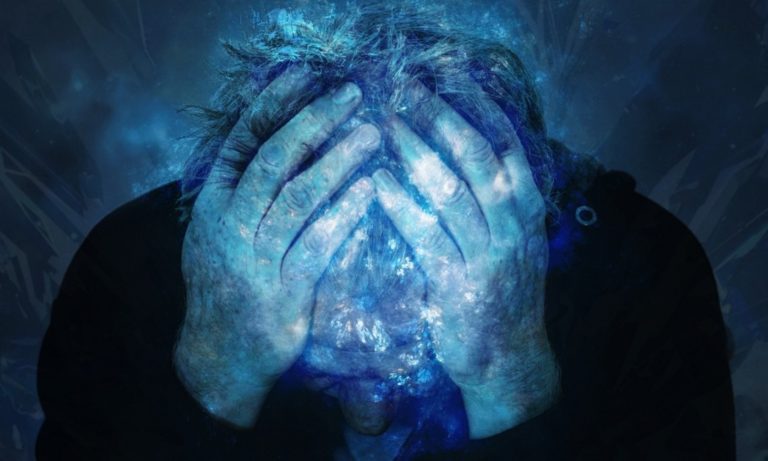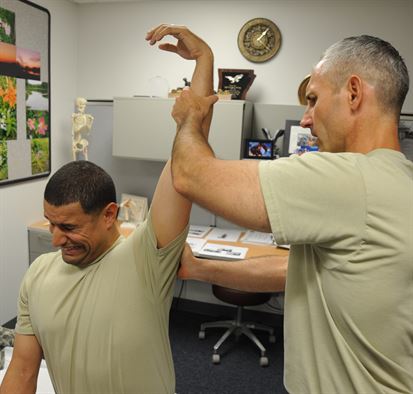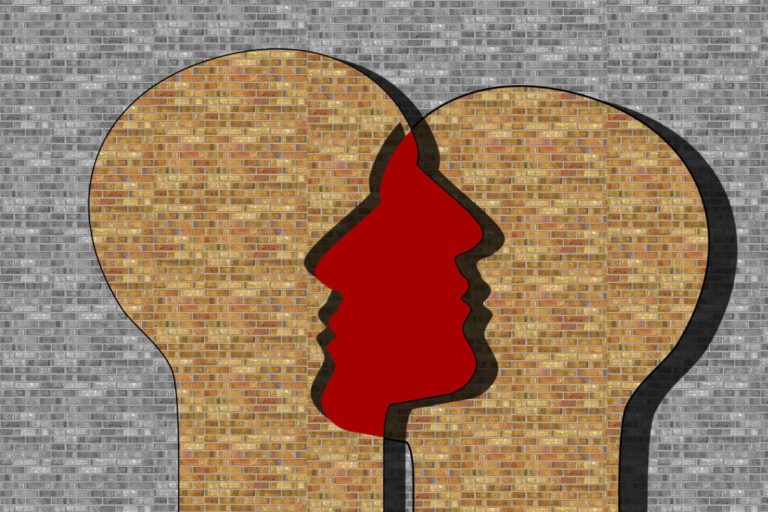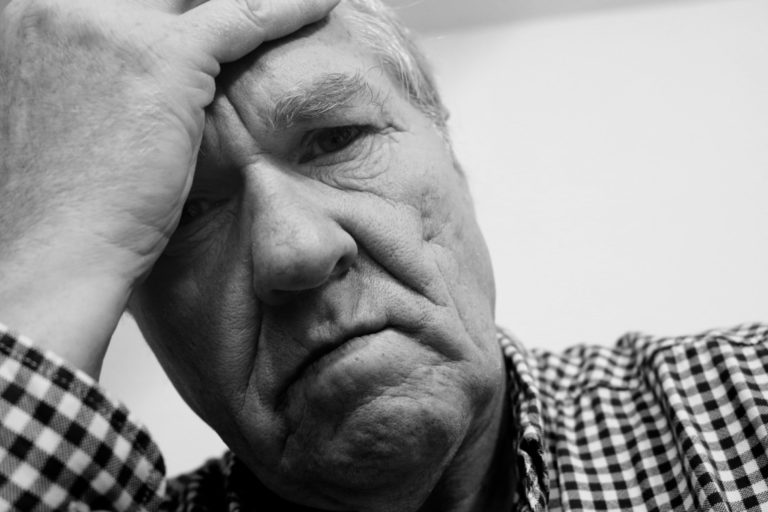Pain relief has become a business in this country! If you’re suffering from aches and pains, then you have probably used some pain relief pills, or have undergone some procedures to help you heal from your injuries. Maybe that has worked, and maybe it hasn’t (yet).
One thing is for certain: You’re not alone!
From body aches and pains to neck and shoulder pain, to varicose vein pain, to joint aches and pains, 120 million people are currently in pain!
These days, people are spending over $300 billion per year in search for a cure; $77 billion of it is spent on treatments to help cure lower back pain.
People look for anything that can help them feel better: They try opioids and marijuana, natural pain relief creams and supplements, over the counter home products, as well as physician-administered procedures.
No wonder that a lot of money is being spent on chronic pain treatment, and the cost of treatments have gone up tremendously in the last few years.
*Please note: This post contains affiliate links. Several links in this post will take you to Amazon.com or to other sites where you can find out additional information about some of the products mentioned here, read reviews, and check out prices.
Post Contents
Pain relief 101: Can the human body heal itself?
 Although we understand how dangerous it is to take too many prescription painkillers to kick the pain, we must also begin to understand why we have pain in the first place.
Although we understand how dangerous it is to take too many prescription painkillers to kick the pain, we must also begin to understand why we have pain in the first place.
Pain is like an alarm system in our body. It is through the pain that our body is trying to tell our brain that there’s something wrong. Often times, people want quick pain relief and reach out to pain medication. They don’t stop and think twice about “why” they are in pain.
It’s hard to get to pain relief right away without treating the cause of the injury. The body’s immune system releases painful sensations as a method to start the healing process. For example, someone seeking knee pain relief may need a diagnosis by a doctor. This is because the potential of knee repair could be good, even if it requires surgery at times. Simply taking pain medication without understanding what exactly is wrong with the knee will not make sense at all. The pain could be a result of wear and tear of the kneecap, the ligaments, or cartilage of the knee. But which condition is the real reason that brought on the pain in he first place?
Patients are demanding more pills
For most injuries, aches and pains may go away with short-term treatment methods. However, when the pain lingers, the situation gets puzzling to a physician.
Doctors are in the business of healing. Sometimes doctors get cornered by demanding patients who complain about the severity of their pain. When these complaints about pain become more rampant, the physician then ups the dosage, which is not a good idea because of higher dosages only numb the pain.
The experience at the doctor’s office fails to get rid of the reasons why the pain started in the first place and the patient continues to experience the pain.
Low back pain treatment horrors: A true story
Mike is a friend of mine who was demolishing a wall in his home last year when he fell flat on his back. He immediately experienced sharp pain in his lower back and around his neck and shoulder area.
At 39 years of age, and at 210 pounds, Mike was in such turmoil from his sudden pain that he had to lay low for the rest of the day. He took two days off and binge watched seasons 5 and 6 of Game of Thrones.
Getting into pain relief hell
After three days of agony, and needing a break from his indoor prison, Mike drove himself to an urgent care center in Tampa Bay. After Mike was evaluated, the physician told him: “You will need someone to drive you back home”. The physician then proceeded to inject Mike with some heavy duty pain medication, but not before Mike called a common friend to pick him up from the urgent care clinic.
Before he left the clinic, Mike asked about alternative therapies and the physician suggested a massage therapist who “does good work”.
The first massage therapy session
The massage therapist took Mike in and started an intense massage session on his neck, shoulder, and back area. Mike’s back was “killing him” and his neck and shoulder pain had increased tremendously.
The therapist literally pounded Mike’s muscles and confidently asked “feeling better, right?” Mike was, In fact, feeling worse.
Disappointed, Mike started taking over-the-counter pain relief medicine. Although this helped Mike for a little while, after a few short weeks the pain returned with a vengeance.
 Mike sought the help of a specialist this time.
Mike sought the help of a specialist this time.
After a series of tests and an MRI, the specialist diagnosed Mike with a ruptured spinal disc. Mike also had some stress around his neck and shoulder, and desperately needed muscle pain relief.
The specialist recommended that Mike performs routine back pain relief exercises and undergoes physical therapy.
Equipped with a local physical therapist’s name, Mike was hopeful once again.
Once he arrived at the physical therapy session, Mike was passed on from the therapist to a student who, unfortunately for Mike, made things worse. The exercises for the lower back pain relief that Mike was given were not explained properly. His pain continued.
Frustrated again, Mike stopped going to physical therapy and started searching on his own for pain relief.
Mike felt completely out of control and a victim to his pain, which seems to have a life of its own. He read so many self-help and medical books on pain. Without the recommendation of his physician, Mike tried acupuncture and visualization techniques, but nothing worked.
How to bring on sustainable pain relief for low back pain
Eventually, Mike went back to the drawing board and chose another physical therapist.
Finally, he got some relief. The new physical therapist taught Mike how to walk and sit properly. She also recommended the proper back pain exercises to help with his back pain and neck and shoulder issues.
The physical therapist also advised Mike to purchase a good orthopedic cushion that can act as support to help him sit better and improve his posture. Not too long after, Mike was able to go back to his routine after a few weeks of agony.
Can pain relief be permanent for lower back pain injuries?
People can heal long-term from lower back pain, but it all depends on the injury.
In the case of Mike in the story above, a soft tissue injury caused his pain. Soft tissue injuries can ultimately affect the intervertebral disks, compress the nerve roots, and cause the person to perform bad movements that don’t necessarily support a healthy posture. This impacts the spinal joints, causing pain. Sometimes people refer to these injuries as “torn” or “pulled muscle or ligament”.
Lower or upper back: The true reasons for strains and sprains
Healing lower or upper back pain can be tricky.
The excessive strain on the lower back or upper back can cause acute pain. This can impact someone suddenly and usually disappears with time.
The pain can also take a while to develop due to repetitive muscle strains or ligament sprains.
Muscle strains are contraction-induced injuries where the fibers in the muscle tear down due to stress. This is usually followed by severe swelling and pain.
There are many reasons why these types of injuries happen. Often time, they are caused by the following:
- Heavy lifting of objects while twisting the spine.
- A repetitive poor posture where the spine is not properly aligned.
- Falling and putting stress on the lower back.
- Impact sports, such as football or baseball.
The constant pain can be very debilitating. It’s not only inconvenient, but it’s also extremely frustrating. Pain relief is always the number one goal and some of us reach for whatever pain relief is available!
All sufferers can attest to the fact that the timing is never right to have a spinal injury or any type of pain-related injury. After all, when is it convenient to have a rheumatoid arthritis flare or a debilitating migraine headache that lasts for three days?
Pain is the MAIN reason why Americans spend over $300 billion per year in Pain RELIEF MEDICATION AND Treatment. But money is not all that is lost. Productivity goes down as well.
Acute pain vs. chronic pain facts

Acute pain is what we feel when we are injured or suddenly hurt. For example, we feel an intense acute pain when we hit our foot on the edge of the table. It starts all of a sudden but doesn’t last long.
Pain is a normal part of all our lives, but sometimes being in pain becomes a chronic matter. Eduardo Fraifeld, M.D., president of the American Academy of Pain Medicine, identifies the pain to be chronic when “the pain itself becomes a disease.”
This means that when the injury heals, but the person continues to have problems, pain is classified as chronic. Chronic pain is usually discomfort that lasts more than 6 months. It often requires the attention of a physician.
Are you taking the wrong pain relief medication?
Acute pain can sometimes be mistaken for something else. You can easily take the wrong medicine for what you believe is causing your condition. However, your pain could be related to something completely different. Here are some examples:
Lower right back pain relief
Often times, lower right back pain is mistaken for back pain when actually it is related to a kidney stone trying to pass through the urine. The kidney stone becomes stuck in the ureter.
The ureter is what connects the kidneys to the bladder. Once the stone is passed in the urine, the pain goes away.
Left side back pain relief
Left side back pain can indicate internal organ issues, such as a kidney infection, pancreatitis, kidney stones or gynecological disorders.
These pain symptoms may get worse with time. Therefore, it is important to seek the assistance of a physician if you feel such a pain.
Pain relief for the left side of the body
Left side pain in the body can be a result of gallstones that can create inflammation in the pancreas and the bile duct.
This requires immediate attention because a ruptured pancreatic pseudocyst, which is a collection of tissue and fluids that form in the pancreas, can be life-threatening. Once treated, the inflammation goes down and the pain disappears.
What you see is not necessarily what you get
It is important to be very open with your physician about your condition because unlike other professions, in medicine what you see in front of you does not necessarily mean what it means.
Usually, doctors have to eliminate conditions and ailments to reach to final conclusions about what might truly be taking place. Here are some examples:
- A clogged artery could be the reason for neck pain during intense exercise. The clogged artery might be ignored. Physicians need to probe into other factors instead of simply addressing the pain in the neck. Clearly, the clogged artery issue will need to be looked into as soon as possible.
- A spinal issue could have something to do with the neck which, in turn, gives signals of distress that can reach all the way to the left arm.
- Severe allergies or pain all over the body could be related to failing internal organs.
- Dehydration is often mistaken for other illnesses. Here are some common symptoms:
- Thirst
- Joint Pains
- Migraines
- Dizziness
- Dry Skin
- Chapped lips
- Constipation
- Muscle cramps
- Very yellowish urine color
- Confusion
- Inflammation
The opioids epidemic: Pain relief gone bad!
 There’s a deep conversation going around these days in the United States about pain and pain relief. There’s so much pain in the usa and facts about pain, especially facts about back pain, are constantly coming out from various sources.
There’s a deep conversation going around these days in the United States about pain and pain relief. There’s so much pain in the usa and facts about pain, especially facts about back pain, are constantly coming out from various sources.
In 2014, The Centers for Disease Control and Prevention (CDC) reported that almost 2 million Americans were dependent on opiates and that over 28,000 people died of an overdose of prescription opioids that year. This amounts to 60% of the entire group of people who died from drug overdose in 2014.
These are clearly alarming rates! Now more than ever there is a belief that people are taking more and more opioids, such as Percocet and Vicodin, which are leading to horrendous addictions and overdoses.
Each day more than 1000 people are treated in hospital emergency rooms for overusing these drugs.
Should I consider taking opiates?
When you can find the source of our pain, you can address the issue head on and alleviate the cause from within your body.
This is why it’s important to be aware of why you are in pain and not to use opiates without a doctor’s supervision because these popular medicines tend to be extremely addictive.
Some aches and pains, such as allergies or internal body aches, do not need heavy duty opiates. Pain relief could be as easy as taking an over-the counter medication or simply resting the body.
Taking opiates for long periods of time is a bad idea, especially if the pain is manageable. An immediate injury may be painful at first but it eventually resolves itself.
The CDC issues guidelines for opioids and warns about excessive pain relief medications
Pain can come and go as it pleases. It can take over your days, your nights, and your life. It can disappear on a whim and come back with a vengeance.
Pain can be a mystery. Sometimes physicians can explain the exact source of pain and other times they have no idea where it’s coming from.
In March of 2016, the CDC addressed pain management doctors and issued its guideline for prescribing opioids for chronic pain treatment. This was the first ever recommendation of its kind by the CDC that was directly related to opioids.
The CDC suggested that physicians need to try other types of treatments than opioids to help patients alleviate their pain. The physicians were also advised by the CDC that they would need to use the lowest dose of opioids possible, unless the patient is undergoing cancer treatment or requires end-of-life palliative care.
Under the direction of former President Barack Obama, the United States government at the time of the CDC findings proposed a budget that included an unprecedented $1.1 billion to help lower prescription drug and heroin abuse among Americans.
Following this uproar, the Food and Drug Administration (FDA) launched an initiative that changed how opioids drugs are approved and regulated. The purpose of the new initiative was to discourage primary care providers from over-prescribing opioids to their patients.
At the time, 50% of all opioids were prescribed in the US.
The more you know about the source of your pain the quicker you get to pain relief
As a savvy consumer, you have to understand where your pain is coming from.
You can’t simply relieve the pain with a dose of this medicine or a dose of that medicine. You must listen to your body and acknowledge what it is trying to tell you: Pain means something is wrong somewhere and it’s your job to discover what it is instead of numbing the pain with painkillers.
Pain can linger for a long time and pain relief can be temporary. Sometimes the pain comes back after a short period of feeling pain-free.
When your head is pounding or your back is debilitating your every move and you feel that an invisible force is stabbing, you can’t help but reach to the first available method to relieve your pain in order for it to go away. However, reaching for pain pills all the time is not an effective method to treat an injury such as low back pain.
Pain relief could be attainable when one mixes the healing processes with other methods, such as back pain medicine, lower back pain exercises and yoga for lower back pain. Changing eating habits, moving better, and altering daily habits can also help.
How to identify the severity of your pain
 Let’s face it. Pain can be discouraging and intense. Your body may not tell you what’s really going on.
Let’s face it. Pain can be discouraging and intense. Your body may not tell you what’s really going on.
Did you ever notice how many questions some health practitioners ask? This is because pain is subjective and there is no “one size fits all” in the realm of pain treatment.
You should not worry if physician keeps pressing you for details. For example, the doctor may ask: “How long have you had the pain?” or “has there been any change in your sleep habits lately?”
Sometimes the questions may sound unrelated, such as “have there been major social changes in your life?” or “has your mood changed since you had your pain?”
Some of these questions may be annoying to you, but they are important to assess your situation. Therefore, don’t be suspicious when you hear them. Answer them with honesty and precision.
How to answer these pain questions at your doctor’s office
Q: How bad is your pain?
A: You should tell your physician or clinician how the pain feels. For example mild, moderate, intense, or maximum pain (which is the absolute worst pain one can have). The practitioner will be able to fill out the appropriate intensity on their evaluation sheet.
Q: What does your pain feel like?
A: Pain can be described in many ways, including Sharp, dull, stabbing, throbbing, tingling, burning, shocking, or shooting pain. It is important to state what your pain feels like. A pinched nerve or damaged nerve will have shooting pain that feels like a shockwave into your affected area. Sometimes it could be tingling or burning. Be descriptive.
Q: Where does it hurt?
A: Let the practitioner know where your pain hurts and whether it is spreading to other areas. Share your daily routine, your habits, and whether anything has changed in your life that caused a specific area to hurt.
Q: When did you start having this pain?
A: Inform the practitioner of when you first noticed your pain. It is important to be precise in order to accelerate your pain relief. Think of the following:
- Were you exercising on a specific machine?
- Did you move furniture lately?
- Were you lifting something heavy?
- What heavy activities did you perform before your injury?
Understand your risk and reward when it comes to pain relief
Managing and even healing from your pain could be possible.
Not all pains warrant heavy duty medication or opioids. It is important to do some research and to listen to what your body is trying to tell you. This does require patience and some tolerance.
The proper dosage of pain relief medications can be important in the healing process. There are many alternative options to taking heavy opioids and undergoing potentially life-threatening treatments. These common methods are discussed in the second part of this series titled Chronic Pain Treatment Methods & Acute Pain Remedies (WHAT WORKS).
The ability for your body to heal depends on many factors, including a support system, your mindset, and your nutrition. Your aches and pains do not have to be permanent. Just make sure you educate yourself on the possibilities and the dangers.
Be patient and keep your long term health goals in perspective, rather than continuing to take short-lived quick pills that could wreak havoc on your body in the long run.
What about you? What’s your experience with pain relief? Did it work for you? Share your thoughts and comments below and let us know.






























